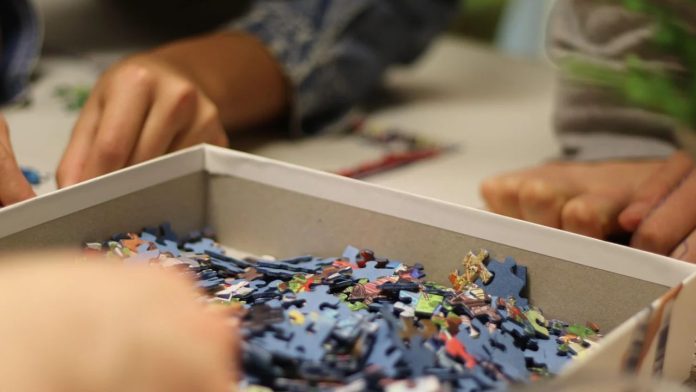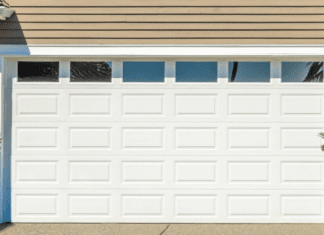The 1000-piece jigsaw puzzle resembles an immense field of alternatives, proving both challenging and gratifying. Your strategy matters more than your luck when attempting to solve jigsaw puzzles.
From sorting tricks to tackling tricky skies, this guide reveals excellent tips for turning chaos into triumph. And if you crave a personal touch, Tucocoo’s recent jigsaw puzzles let you turn favorite photos into unforgettable challenges. Ready to conquer the puzzle? Let’s piece it all together.
How to Successfully Complete a 1000-Piece Jigsaw Puzzle?
Step 1: Set the Stage for Success
The environment in which you work as a puzzle solver is significant to your experience. Select a big, flat area for your work, such as your dining table, board, or dedicated puzzle mat. Proper illumination of the area should be maintained to prevent eye discomfort. Natural light is ideal, but a bright lamp will do.
Pro Tip: Use a puzzle mat or felt-lined board to keep pieces from sliding. If space is limited, work on sections in smaller trays and combine them later.
Step 2: Sort Like a Pro
Dumping all 1,000 pieces onto the table is a rookie mistake. Instead, sort methodically:
- Edge Pieces: Separate all straight-edged pieces first. These form the puzzle’s border, giving you a clear framework.
- Color/Pattern Groups: Group the remaining pieces by their dominant colors, patterns, or textures, such as sky pieces, greenery, or unique motifs.
- Unique Shapes: Set aside unusually shaped pieces (e.g., knobs, holes) that stand out. These often fit into specific sections.
Use muffin tins, plastic trays, or zip bags to keep sorted groups organized and visible.
Step 3: Build the Border
Assemble the edge first. The puzzle frame serves to establish its dimensions as well as the overall design of the puzzle. You should remain calm because the lost edge pieces appear later in the puzzle.
Avoid forcing pieces. If an edge section isn’t clicking, revisit your sorting—it might belong to a different part of the border.
Step 4: Tackle Sections, Not the Whole Puzzle
Focus on one color or pattern group at a time. For example:
- Start with the most distinctive area (a bright red barn, a face in a crowd).
- Move to large blocks of color (sky, ocean, fields).
- Save tricky sections (like monochrome areas) for last.
Why It Works: Smaller victories keep motivation high. Completing a flowerbed or a window feels rewarding and builds momentum.
Step 5: Use the Picture—But Don’t Rely on It
Refer to the puzzle’s reference image, but don’t glue your eyes to it. Pay attention to subtle details:
- Shape Over Color: A piece might not match the expected color but could fit based on its unique cut.
- Backside Clues: Some puzzles print letters or numbers on the back to group sections. Use this if you’re stuck!
Flip pieces image-side down to focus purely on shapes. This works wonders for repetitive patterns like bricks or leaves.
Step 6: Stay Patient With the “Gray Zone”
Every puzzle has a dreaded section—a gray sky or a wall of indistinct trees. Here’s how to conquer it:
- Sort by Shape: Group pieces by number of knobs/holes (e.g., two knobs, three holes).
- Trial and Error: systematically test potential candidates. It’s tedious, but each correct piece narrows the options.
- Take Breaks: Step away and return with fresh eyes.
Step 7: Collaborate (or Compete!)
Puzzling doesn’t have to be solitary. Invite family or friends to help:
- Assign sections based on interests (e.g., kids handle bright areas, adults tackle edges).
- Turn it into a game: Who can find the most pieces for the red barn in 10 minutes?
Step 8: Preserve Your Masterpiece
Once completed, decide its fate:
- Glue and Frame: Use puzzle glue to preserve it as wall art.
- Disassemble and Reuse: Store pieces in a labeled box for future fun.
- Donate or Swap: Share the joy with a friend or puzzle exchange group.
Eco-Tip: Old pieces should be recycled or transformed into functional objects such as coasters or ornaments.
Common Mistakes to Avoid
- Rushing: Speed leads to frustration. Enjoy the process.
- Ignoring Ergonomics: Sit straight, stretch, and take breaks to avoid neck strain.
- Overlooking Lighting: Poor light causes eye fatigue and color misjudgments.
Why 1,000 Pieces? The Benefits Beyond Fun
- Brain Boost: Enhances memory, problem-solving, and spatial reasoning.
- Stress Relief: The focused, repetitive motion lowers cortisol levels.
- Mindfulness: Forces you to stay present, quieting mental chatter.
Conclusion
A successful thousand-piece puzzle project requires patience to focus on the journey and appreciation for the individual achievements throughout its completion. Applying the correct approach will make any challenging section easier to complete.
For an extra-special twist, try Tucocoo’s custom puzzles, where your memories become the masterpiece. So grab your coffee, spread those pieces, and dive in.














